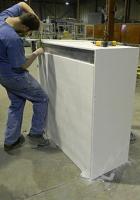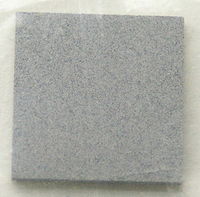History of Adhesives II
In Central Asia, the rise of the Mongols in approximately 1000 C.E. can be partially attributed to the good range and power of Genghis Khan's hordes' bows. The bows were constructed with laminated lemonwood and bullhorn bonded by a now unknown adhesive.
In Europe, glue was not widely used until the period 1500-1700 C.E. At this time, now world renown cabinet and furniture makers such as Chippendale and Duncan Phyfe began the use of adhesives in their products. Musical instruments made by Antonio Stradivari are believed to have been laminated with a secret connection, including vernice bianca, a varnish made of acacia gum, honey and egg white.
The development of modern adhesives began in 1690 with the founding of the first commercial glue plant in Holland. This plant produced glues from animal hides.
Liquid Animal Glue
In 1750, the first British glue patent was issued for fish glue. The following decades of the next century witnessed the manufacture of casein glues in German and Swiss factories.In 1876, the first US patent (number 183,024) was issued to the Ross brothers for the production of casein glue.
Casein Glue Preparation
The first US stamps used starch based adhesives when they were issued in 1840. The first US patent (number 61,991) on dextrin (a starch derivative) adhesive was issued in 1867.
Natural rubber was first used as material for adhesives starting in 1830. In 1839, Charles Goodyear discovered that a rubber and sulfur mixture, when heated, becomes elastic. This was the first time that a natural chemical was altered to make a plastic with new properties. In 1843, Thomas Hancock named this process vulcanization. In 1862, a British patent (number 3288) was issued for the plating of metal with brass by electrodeposition to obtain a stronger bond to rubber.[14] The development of the automobile and the need for rubber shock mounts required stronger and more durable bonds of rubber and metal. This spurred the development of cyclized rubber treated in strong acids. By 1927, this process was used to produce solvent based thermoplastic rubber cements for metal to rubber bonding.
Natural rubber based sticky adhesives were first used on a backing by Henry Day (US Patent 3,965) in 1845.Later these kinds of adhesives were used in cloth backed surgical and electric tapes. By 1925, the pressure-sensitive tape industry was born.Today, sticky notes, 3m tape, and other tapes are example of PSA (pressure sensitive adhesives).
A key step in the development of synthetic plastics was the introduction of a thermoset plastic known as Bakelite phenolic in 1910. Within two years, phenolic resin was applied to plywood as a coating varnish. In the early 1930s, phenolics gained importance as adhesive resins.[19] The 1920s, 1930s, and 1940s witnessed great advances in the development and production of new plastics and resins due to the World Wars. These advances greatly improved the development of adhesives by allowing the use of newly developed materials that exhibited a variety of properties. With changing needs and ever evolving technology, the development of new synthetic adhesives continues to the present.However, due to their low cost, natural adhesives are still more commonly used.



